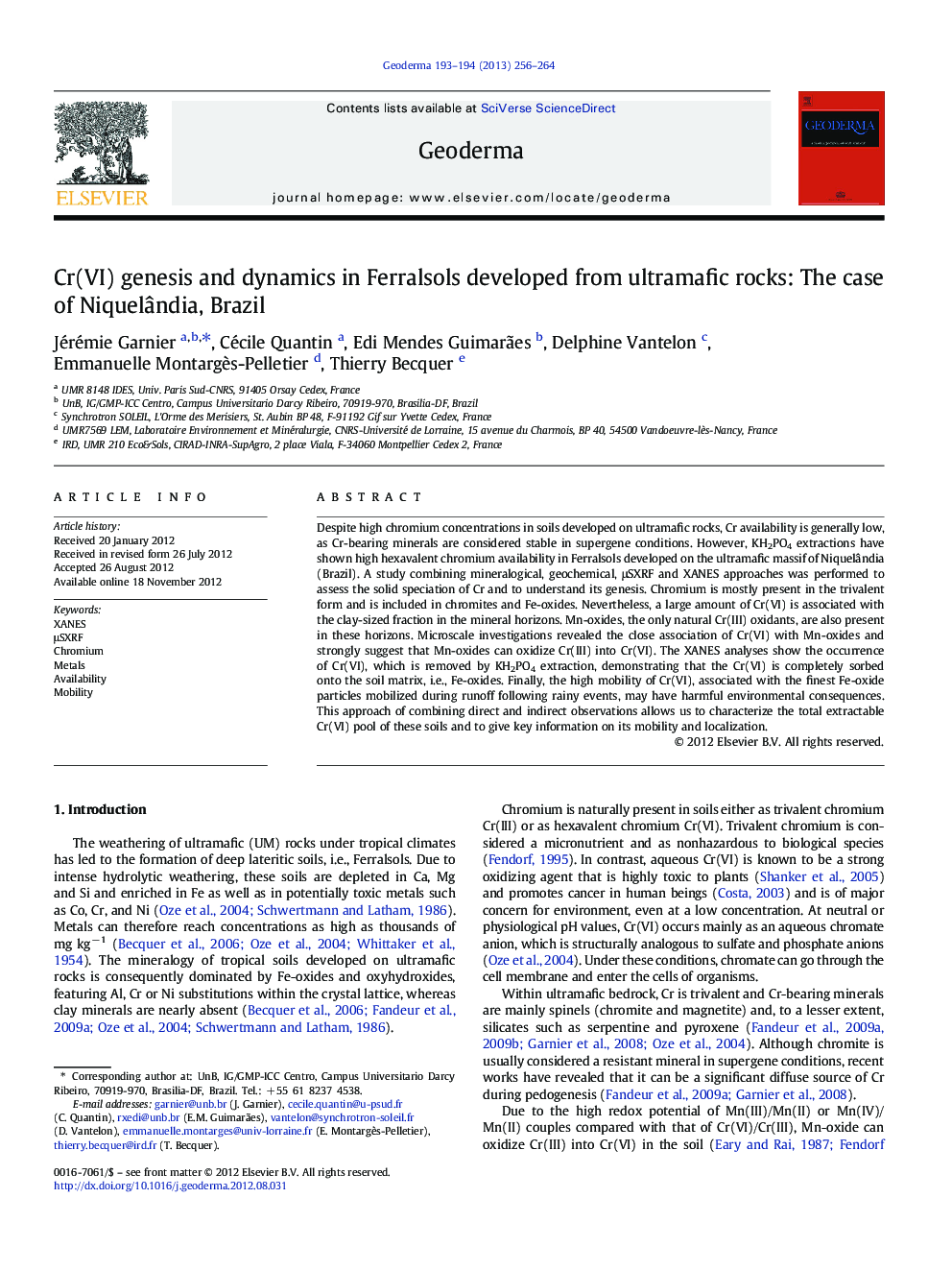| Article ID | Journal | Published Year | Pages | File Type |
|---|---|---|---|---|
| 4573689 | Geoderma | 2013 | 9 Pages |
Despite high chromium concentrations in soils developed on ultramafic rocks, Cr availability is generally low, as Cr-bearing minerals are considered stable in supergene conditions. However, KH2PO4 extractions have shown high hexavalent chromium availability in Ferralsols developed on the ultramafic massif of Niquelândia (Brazil). A study combining mineralogical, geochemical, μSXRF and XANES approaches was performed to assess the solid speciation of Cr and to understand its genesis. Chromium is mostly present in the trivalent form and is included in chromites and Fe-oxides. Nevertheless, a large amount of Cr(VI) is associated with the clay-sized fraction in the mineral horizons. Mn-oxides, the only natural Cr(III) oxidants, are also present in these horizons. Microscale investigations revealed the close association of Cr(VI) with Mn-oxides and strongly suggest that Mn-oxides can oxidize Cr(III) into Cr(VI). The XANES analyses show the occurrence of Cr(VI), which is removed by KH2PO4 extraction, demonstrating that the Cr(VI) is completely sorbed onto the soil matrix, i.e., Fe-oxides. Finally, the high mobility of Cr(VI), associated with the finest Fe-oxide particles mobilized during runoff following rainy events, may have harmful environmental consequences. This approach of combining direct and indirect observations allows us to characterize the total extractable Cr(VI) pool of these soils and to give key information on its mobility and localization.
